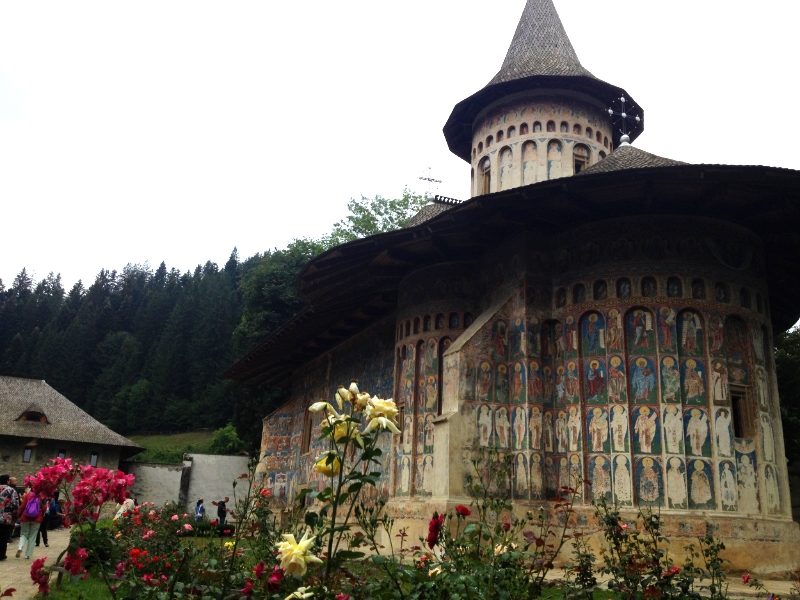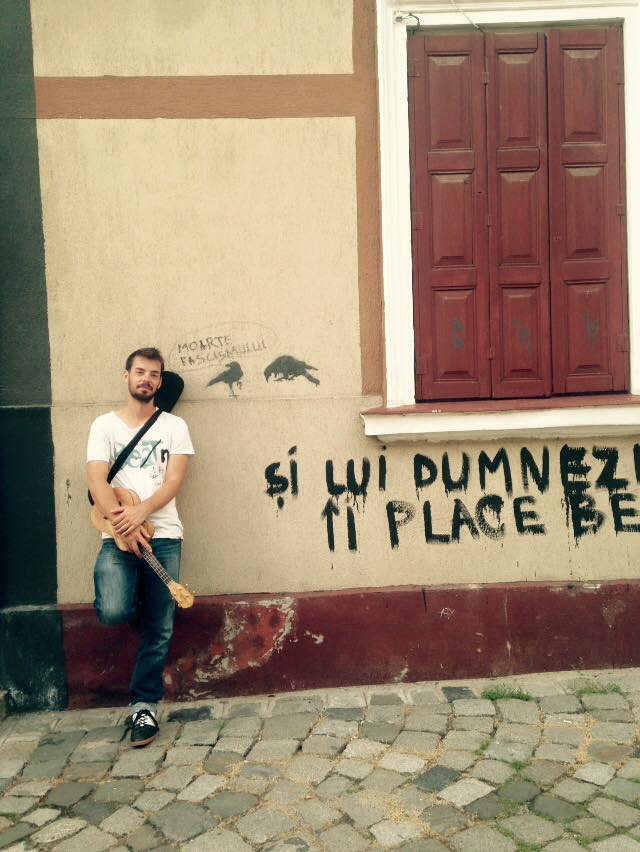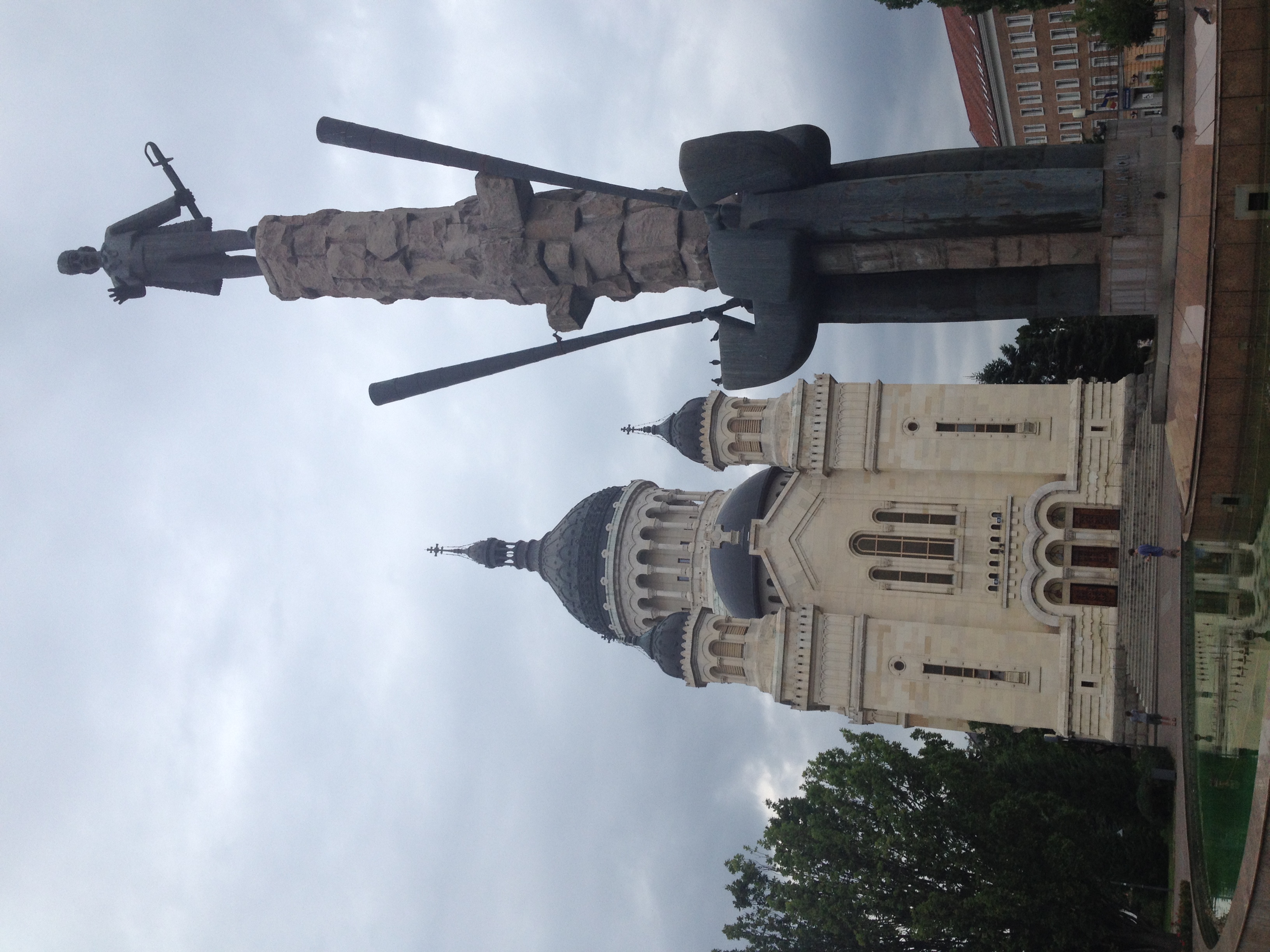I had an interesting conversation this morning with the kind lady running the small pension I'm staying at, near "Suceava". We were talking about bus timetables, and I was asking at what time I should leave to get the "Gura Humorului" bus. And the answer I understood from the gestures and my broken Romanian was this one: that if ever she cuts her own finger, I should come back in 50 years and it'll all be fine. Which is odd. And which also speaks volumes on how little I've learned of the language despite spending so much time here. Anyway,
The most flowery mode of transportation in the world in is Gura Humorului, Romania
I'll let you in a bit further behind the scenes here. My Ukuleles and I have a system. We talk to people, ask them what's nice in their country, and go there. It's fairly simple. So when I asked Romanians what I should check out in their land, I heard about "painted monasteries in the North" quite a few times. So off I went. They didn't mention that I should better have a car, that there aren't that many buses and bla, but, it's not like I asked.
Pictured above, I'm guessing, Jesus with sort of braids inside the Voronet Monastery, also pictured. Then, paintings on the exterior of the Humorului Monastery, also pictured.
Maybe it was the weather, my mood, or the fact I'm not an Orthodox Christian, but, the paintings didn't really win me over. I enjoy the idea, of painting lots of people on buildings. It's fun. A lot of the depictions even look like comic strips, except instead of batman saving Gotham City, it's Jesus and the Gang saving our souls. Not much dialogue though. And, well, it's not very well drawn to be honest...
My not-so-insightful criticism apart, from the many - probably beautiful - painted Monasteries, I managed to do 2 or 3. Which is not that bad. I still got a good feel for the place. And inspiration for a song:
These two Monasteries above are part of the so-called "Painted Monasteries of Bucovina". The Voronet (with a ț and pronounced Voronets) Monastery was built in 1488, and the Humorului one (in the video) in 1530. Their importance, which completely eluded me, was not missed by UNESCO, who put them in a pretty-important-buildings-list with a few others from the region. The paintings depict the lives of famous saints, in a way that was designed to be accessible to all, although, I didn't really get which way it was supposed to be read. An interesting fact about the Voronet Monastery (which has a river nearby, where a little blue ukulele accompanied a certain song about paint), is that the unique (I was told) bright blue on the outdoor walls was given its own name; the Voronet blue. Which I am retrospectively very glad to have seen, with my own shade of blue and its four strings on my back.
it's not play, it's not a masterpiece, it's not a portrait here to stay. just like like the pictures on these walls they cease, to shine and slowly fade away. only cold stones I fear is what you see, not the bright colours that I thought would be.
A musical colleague, in the Voronets blue. Playing a few chords and watching on, as a tiny white man comes out of a young boy's mouth, and while his buddy to his left is casually killing demons.

























